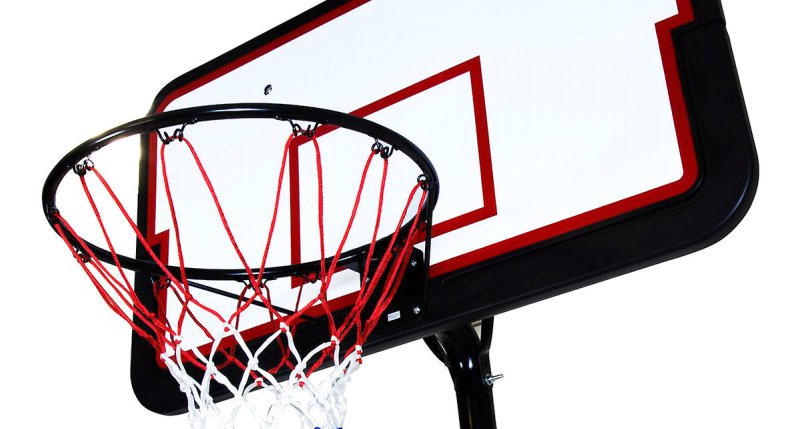
Article by John Matich
I’m a firm believer that every house needs a basketball hoop. Being able to go outside, pretend to be Michael Jordan, shoot 3 pointers and attempt trick dunks anytime you want isn’t just good for kids, but it’s a hell of a lot of fun for adults as well. It’s also pretty good exercise, to say nothing of it being a great social sport.
So having a hoop in your house is a good idea. But what hoop do you get? One that nails into the wall? Some cheap piece of plastic on Amazon? I mean, it’s just a hoop after all, right?
Not exactly.
Like most things, basketball hoops (that is, backboards and rims) come with all kinds of differences that make for a completely different basketball experience. Below you’ll find all the information you need to help you find the right hoop for you.
Backboard
Unlike their 72 inch wide NBA counterparts, most backboards come in at around 44 inches wide. This is more than necessary for home play, with enough room for layups, dunks, and every kind of shot you want to practice. Sure, you can get the 72-inch regulation NBA version if you want, but you’ll probably want a full-size court and in-ground support – all of which is going to cost a lot of money (and land!).
I had a roughly 54-inch backboard for years, and when cranked up above 8 feet, it gave me everything I needed from it. It had plenty of room for more interesting playability while offering a more authentic NBA feel. The roominess of it helped a lot with floaters, and if I missed the hoop on a straight shot, the ball didn’t go careening off into my house.
Aim for a backboard between 50 and 60 inches and you won’t be disappointed. The larger you go, the more the quality tends to increase, but this also shoots the price up as well.
Materials
Backboards come in a range of different materials, each that have their own pros and cons. Some are far better for playing on than others but are also impractical for home use.
Polycarbonate is a type of plastic used in the most common (and cheapest) basketball hoops you’ll come across. Aside from throwing it into molten steel, it is nigh-indestructible so will provide you with a durable hoop that you can bash about across years of practice. The downside? It has terrible rebound which means the ball loses all life once it touches the backboard, and will often just fall limp to the floor. This means it’s a fun hoop to play around with but is also limiting in the value of the practice it offers.
Acrylic backboards look great on first glance, offering a clear, professional appearance that is missing in plastic backboards. However, it doesn’t take long for those looks to become faded from repeat use. The looks still trump their plastic competitors though. The rebound level is also pretty great, which, when combined with its low weight make this a great all-round option for those looking for a good, affordable backboard.
Tempered glass is the material of choice for the NBA, and is what contributes to that iconic, backboard look you’ve seen so often on television. It offers the best quality by far – with the best rebounds and highest durability. On the flip side, it’s also enormously heavy and expensive, so requires an in-ground support pole to even be mounted.
The rim
Unlike backboards, rims come in a uniform size of 18 inches – the variation in them comes in how they are attached to the backboard.
There are standard rims and breakaway rims. Standard rims are screwed into the backboard, giving them a lot of stability, but when dunked, can potentially tear loose, or tear down the entire backboard. Breakaway rims are attached to a separate piece that houses compression springs. While this is all attached to the backboard, the compression springs absorb a lot of the impact of a dunk and help the rim to not tear loose.
The base
Unless you’ve got a backboard that is mounted on a support pole, you’ll probably be getting one with a pole and base. While the type of pole you get is down to personal preference (I’d recommend an adjustable height), you’re going to want a solid base to ensure your basketball hoop doesn’t tip over in the wind or when dunked.
Look for a large 30-gallon plus-sized based for solid support, one that can be filled with sand or water. If you fill it with water, make sure to add specialised gel which helps it stop cracking in the winter.
Recommended
Here are my recommendations for basketball backboard and nets:
UK
- Yaheetech Portable Basketball Hoop and Stand
- BEE-BALL BB-04 Height Adjustable Outdoor Basketball Stand
- Lifetime Streamline Shatterproof Basketball System
USA / Rest of world

